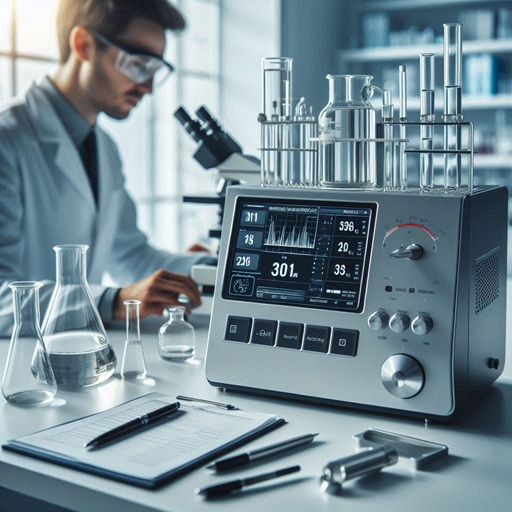The Mercury Detection Instruments Market is a rapidly evolving sector driven by increasing environmental concerns, stringent regulations, and the need for accurate mercury monitoring across various industries. Mercury, a highly toxic element, poses significant risks to human health and the environment. As a result, the demand for advanced mercury detection instruments has surged, making this market a critical component of environmental monitoring and industrial safety.
Market Overview
The Mercury Detection Instruments Market is poised for significant growth in the coming years. According to industry forecasts, the global market size is expected to expand from USD 310 million in 2024 to USD 426 million by 2029, reflecting a compound annual growth rate (CAGR) of 6.6% during the forecast period from 2024 to 2029. This growth is driven by several critical factors, including stringent regulations for environmental protection, active government engagement, and the increasing role of regulatory entities in monitoring environmental conditions.
Stringent Environmental Regulations and Government Initiatives
One of the primary drivers of the Mercury Detection Instruments Market is the growing emphasis on environmental protection. Governments and regulatory bodies worldwide are implementing strict policies to curb mercury emissions and contamination. These regulations are designed to safeguard public health and ecosystems from the harmful effects of mercury, a toxic element known for its detrimental impact on human health and the environment. The enforcement of such regulations has created a robust demand for advanced mercury detection instruments, as industries and organizations strive to comply with these standards.
Stringent Environmental Regulations and Government Initiatives
One of the primary drivers of the Mercury Detection Instruments Market is the growing emphasis on environmental protection. Governments and regulatory bodies worldwide are implementing strict policies to curb mercury emissions and contamination. These regulations are designed to safeguard public health and ecosystems from the harmful effects of mercury, a toxic element known for its detrimental impact on human health and the environment. The enforcement of such regulations has created a robust demand for advanced mercury detection instruments, as industries and organizations strive to comply with these standards.
Rising Industrialization and Urbanization in Emerging Economies
Another significant factor contributing to the growth of the Mercury Detection Instruments Market is the rapid industrialization and urbanization observed in emerging economies. As these regions undergo economic development, the need for effective environmental monitoring solutions becomes increasingly critical. Industries such as mining, oil and gas, and manufacturing are major contributors to mercury emissions, necessitating the use of reliable detection instruments to monitor and mitigate pollution levels. This trend is expected to generate substantial opportunities for market players operating in the Mercury Detection Instruments Market.
Expanding Applications in Research and Development
In addition to industrial and environmental applications, the Mercury Detection Instruments Market is witnessing growing demand from the research and development sector. Mercury analyzers are increasingly being utilized in scientific studies and laboratory settings to analyze mercury levels in various samples, including air, water, soil, and biological materials. This emerging application is opening new avenues for innovation and market expansion, further driving the growth of the Mercury Detection Instruments Market.
Market Outlook and Opportunities
The projected growth of the Mercury Detection Instruments Market underscores the increasing importance of mercury monitoring in addressing global environmental and public health challenges. As industries and governments continue to prioritize sustainability and regulatory compliance, the demand for advanced mercury detection solutions is expected to rise. Market players are likely to focus on developing cutting-edge technologies, such as portable and real-time monitoring devices, to cater to the evolving needs of end-users.
Download PDF Brochure @ https://www.marketsandmarkets.com/pdfdownloadNew.asp?id=1667584
Key Drivers of the Mercury Detection Instruments Market
1. Stringent Environmental Regulations
Governments and regulatory bodies worldwide have implemented strict regulations to limit mercury emissions and exposure. For instance, the Minamata Convention on Mercury, a global treaty, aims to protect human health and the environment from mercury pollution. Such regulations have significantly boosted the demand for mercury detection instruments.
2. Growing Awareness of Mercury Toxicity
Increased awareness about the harmful effects of mercury on human health and the environment has led to a surge in demand for mercury detection instruments. Mercury exposure can cause severe health issues, including neurological disorders, kidney damage, and developmental delays in children.
3. Technological Advancements
The development of advanced mercury detection technologies, such as portable and real-time monitoring devices, has revolutionized the market. These innovations offer higher accuracy, sensitivity, and ease of use, making them ideal for various applications.
4. Expansion of End-Use Industries
The Mercury Detection Instruments Market is benefiting from the expansion of industries such as healthcare, mining, oil and gas, and environmental monitoring. These industries require reliable mercury detection solutions to ensure safety and compliance with regulations.
Challenges in the Mercury Detection Instruments Market
Despite its growth potential, the Mercury Detection Instruments Market faces several challenges:
1. High Costs
Advanced mercury detection instruments can be expensive, limiting their adoption in developing regions. The high cost of maintenance and calibration further adds to the overall expenses.
2. Lack of Awareness
In some regions, particularly in developing countries, there is a lack of awareness about the dangers of mercury pollution and the availability of detection technologies.
3. Technical Limitations
While technological advancements have improved mercury detection, some instruments still face limitations in terms of sensitivity, accuracy, and response time.
Applications of Mercury Detection Instruments
The Mercury Detection Instruments Market serves a wide range of applications across various industries:
1. Environmental Monitoring
Mercury detection instruments are widely used to monitor mercury levels in air, water, and soil. This is crucial for assessing environmental pollution and ensuring compliance with regulatory standards.
2. Healthcare
In the healthcare sector, mercury detection instruments are used to monitor mercury levels in patients, particularly those exposed to mercury through dental amalgams or occupational hazards.
3. Mining and Oil & Gas
The mining and oil & gas industries are significant sources of mercury emissions. Mercury detection instruments are essential for monitoring and controlling mercury levels in these sectors.
4. Food and Beverage
Mercury contamination in food and beverages is a growing concern. Detection instruments are used to ensure the safety and quality of food products.
Key Players in the Mercury Detection Instruments Market
The Mercury Detection Instruments Market is highly competitive, with several key players dominating the industry. Some of the leading companies include:
- Thermo Fisher Scientific Inc.
- Teledyne Technologies Incorporated
- Milestone Srl
- Lumex Instruments
- Mercury Instruments USA
These companies are focusing on product innovation, strategic partnerships, and mergers & acquisitions to strengthen their market position.
The Mercury Detection Instruments Market is poised for significant growth in the coming years. The increasing focus on environmental sustainability, coupled with advancements in detection technologies, will drive market expansion. Additionally, the growing adoption of portable and real-time monitoring devices is expected to create new opportunities for market players.
FAQs About the Mercury Detection Instruments Market
1. What is the Mercury Detection Instruments Market?
The Mercury Detection Instruments Market refers to the global industry involved in the production, distribution, and use of devices designed to detect and measure mercury levels in various environments, including air, water, and soil.
2. What are the key drivers of the Mercury Detection Instruments Market?
The market is driven by stringent environmental regulations, growing awareness of mercury toxicity, technological advancements, and the expansion of end-use industries.
3. Which industries use mercury detection instruments?
Mercury detection instruments are used in industries such as environmental monitoring, healthcare, mining, oil & gas, and food & beverage.
4. Who are the key players in the Mercury Detection Instruments Market?
Leading companies in the market include Thermo Fisher Scientific Inc., Teledyne Technologies Incorporated, Milestone Srl, Lumex Instruments, and Mercury Instruments USA.
5. What are the challenges faced by the Mercury Detection Instruments Market?
Challenges include high costs, lack of awareness in developing regions, and technical limitations of some detection instruments.



